A segment is a dynamic selection of data.
You can create a selection by orders with certain conditions, save it as a segment and use it, for example, when adjusting auto mailings.
In order to create a segment conditions with certain parameters are used as well as logical operators «AND», «OR», «NOT» that form a segment’s rule.
When creating of a selection by users the following conditions are available:
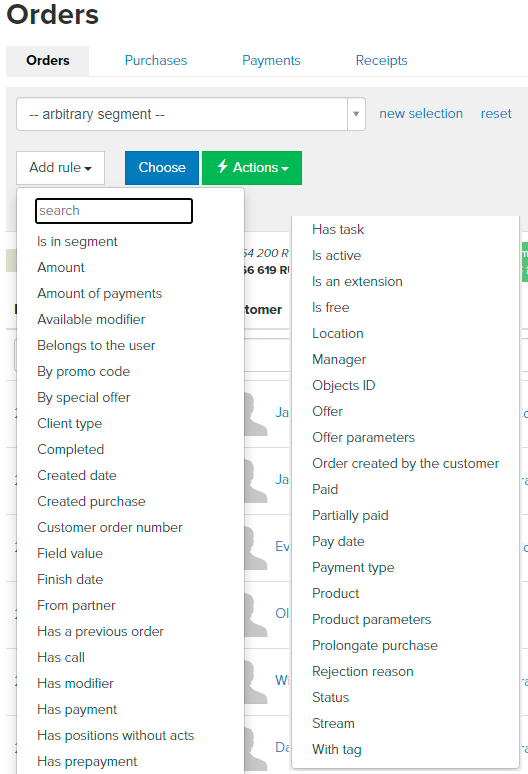
1. In a segment — chooses all orders, which are included to already saved segment.
2. Objects’ IDs — you can find a certain order if you already know his unique system identifier. This identifier can be copied from browser’s address bar — go to order card to do it:
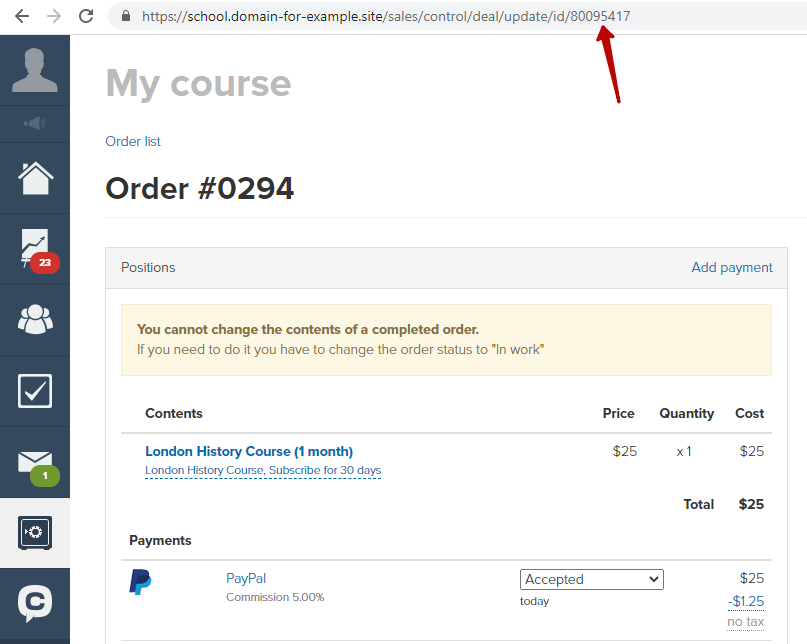
3. Relevant — shows orders with «New», «Processing», «Not confirmed», «Pending payment», «Pending refund», «Partially paid».
4. Free — chooses all orders with null price:
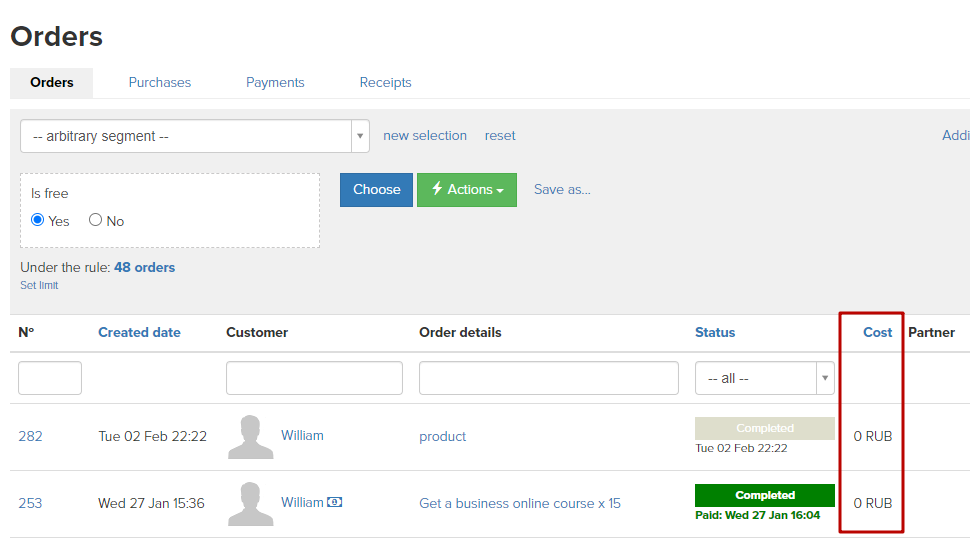
5. Finish date — selects all orders that were finished on a specific date or time period, including free orders.
You can edit the order finish date on the order page:
6. Pay date — shows orders that were fully paid on a specific date or period of time. Only completed orders will be included in the selection (partially paid orders will not be included in the selection for this condition).
You can select partially paid orders with the help of «Has payment» condition.

7. Created date — selects orders that are created on a specific date or time interval:
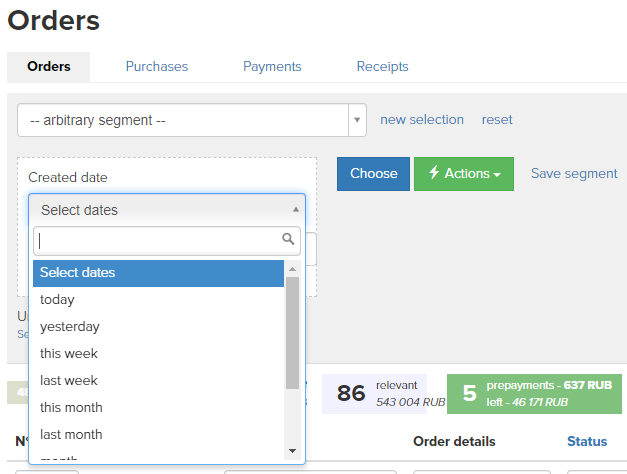

9. Has payment — chooses orders with payments. You can use additional parameters for payments:
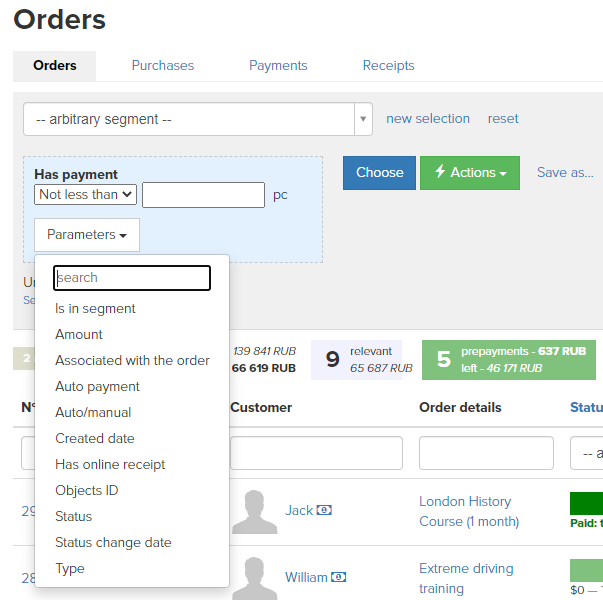
10. Has prepayment — chooses all orders almost purchased by a customer: he got to a page with payment options, but hasn’t finished a purchase:
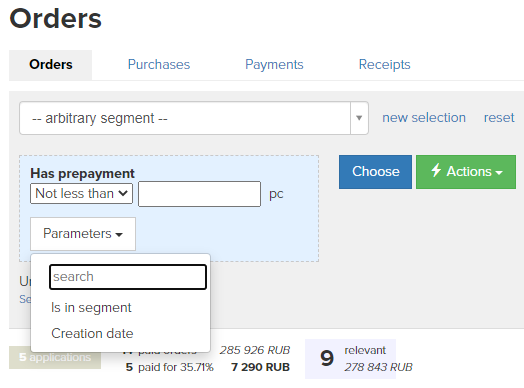
11. Completed — chooses fully paid orders as well as orders with null price.
12. Order created by a customer — all orders created by a customer on his own. It means he filled in a form. If an order was created by a manager, it won’t be included to this selection.
Mind, that only these orders get to «Traffic» section. If you choose «No» checkbox (an order wasn’t created by a customer) — you will see orders which are not depicted in «Traffic» section.
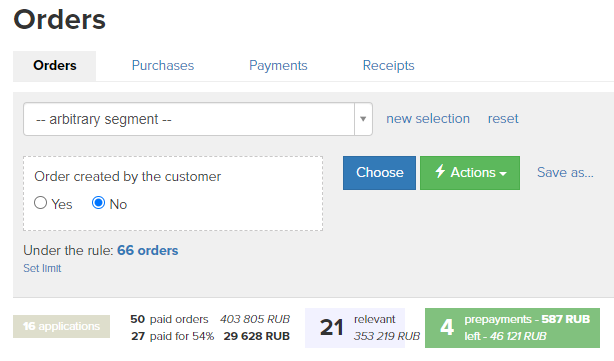
13. Field value — choose all orders which have additional fields.
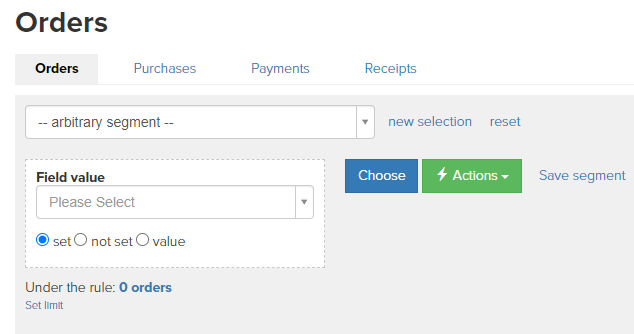
14. Have a previous order — the condition checks whether a customer already had an order before: if yes — his orders will be included to this selection. All ways of order placement are counted. You can choose order’s characteristics in parameters:
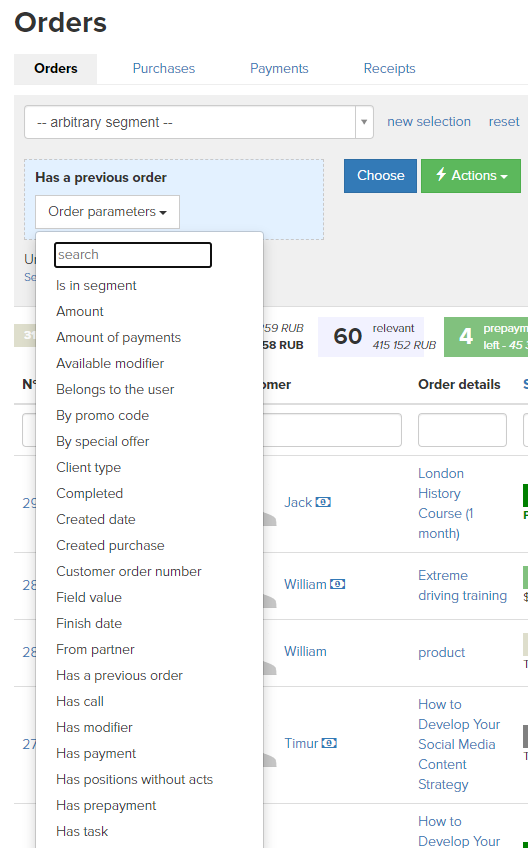
15. A manager — you can choose all orders where a certain manager is specified.
16. Paid — all orders that were fully paid by a user.
17. From a partner — you can choose all orders assigned to a certain partner.
18. Product’s parameters — chooses all orders by certain parameters (product’s name, a stream, a venue):
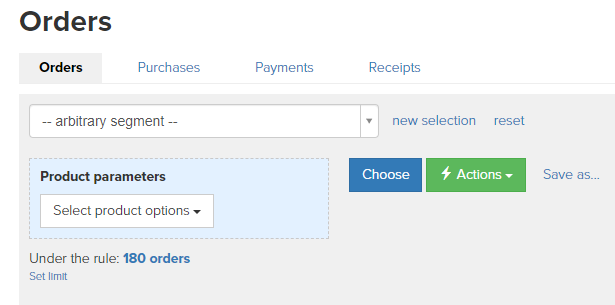
19. By promo offer, by promo code — chooses orders which were created in terms of a certain promo offer or where a promo code was used:
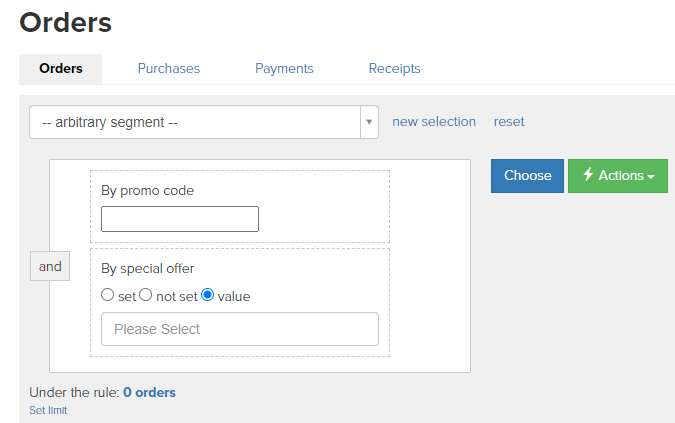
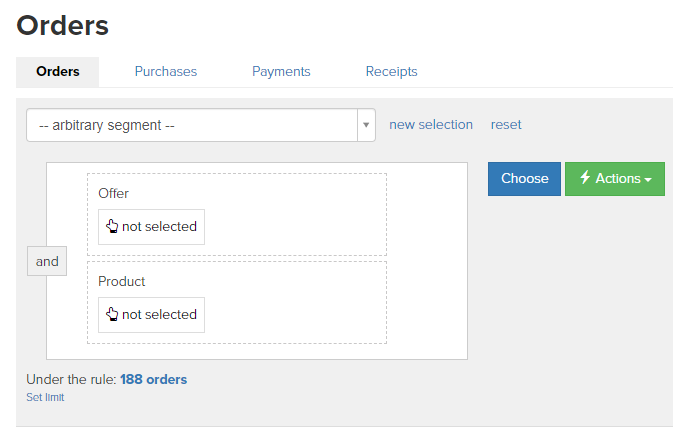
22. Belongs to a user — this condition chooses all orders placed by a certain user or a user with particular parameters (with the help of this condition you can add to a selection needed conditions by users — see «Segments by Users» article).
23. Rejection reason — when an order is cancelled, it is possible to specify a reason for it. In a selection by orders you can view a list of all orders cancelled by a certain reason.
You can order the list of all reasons for refusal on this page: account.getcourse.io/pl/list-value/index?objectType=14

24. With a tag — all orders marked by a certain tag:
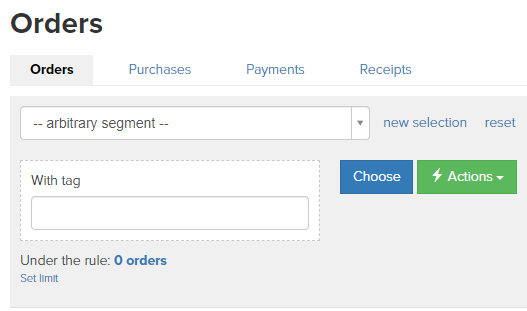
25. Created purchase — all orders which a purchase with certain parameters was made for:
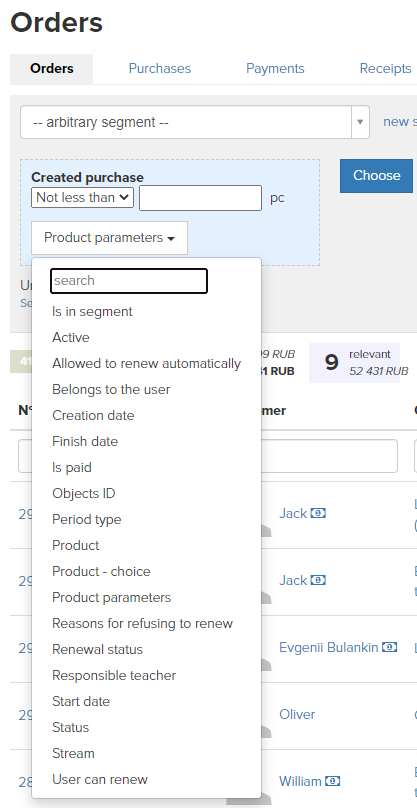
26. Status — chooses orders with a certain status.
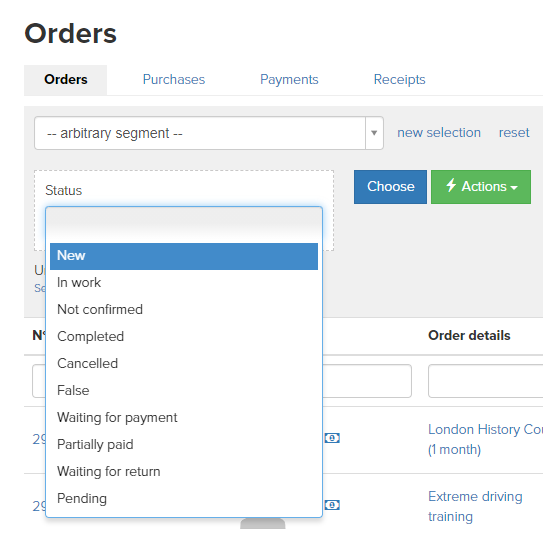
27. Partially paid - chooses all partially paid orders:
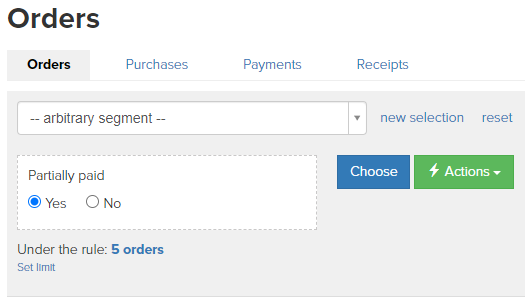
28. Amount — chooses orders with a certain price — you can specify its value or parameters:
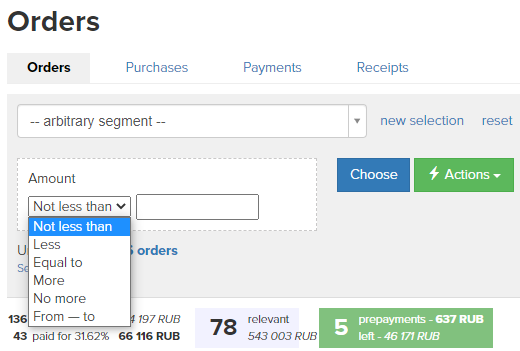
29. Amount of payments — chooses orders which payments were made for. It is possible to specify a total amount of payments for a particular order:
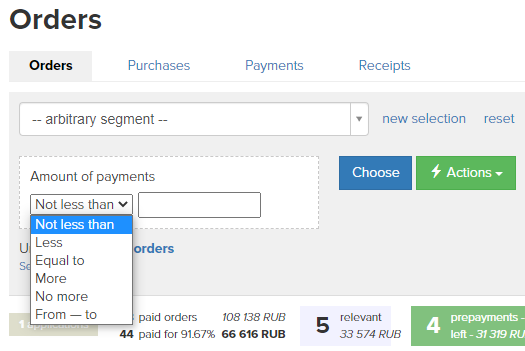
30. Type of customer — chooses orders which belong to long-standing or new customers:
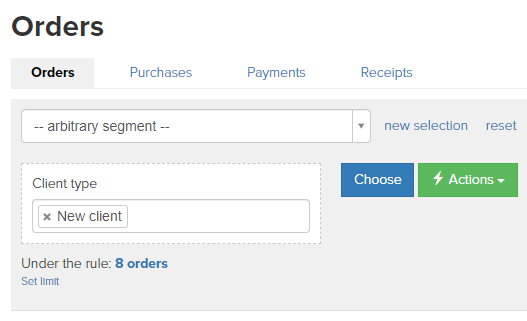
Long-standing customer: a user has more than one paid order.
New customer: a user has only one paid order and it was placed during 24 hours after registration.
First order: a user has only one paid order and it was placed later than during 24 hours after registration.
31. Type of payment: chooses orders paid with the help of a certain payment system:
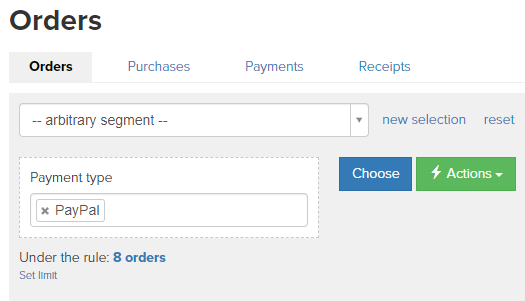
32. Have a modifier — chooses orders which were created with usage of modifier.
33. Modifier available — chooses orders placed for offers which a modifier is active for:
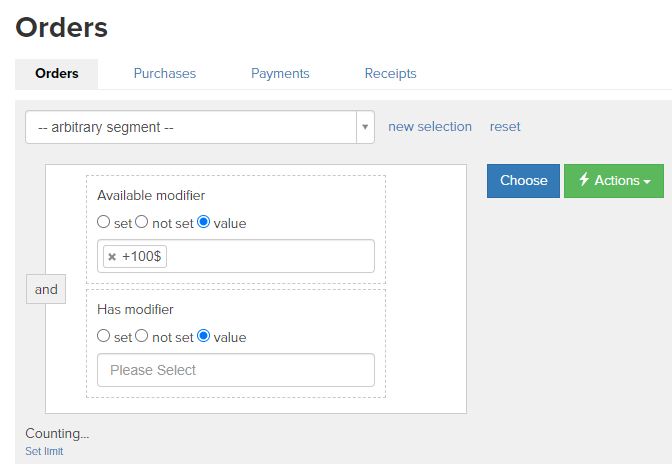
34. Renew an order — chooses all orders which renew previous orders.
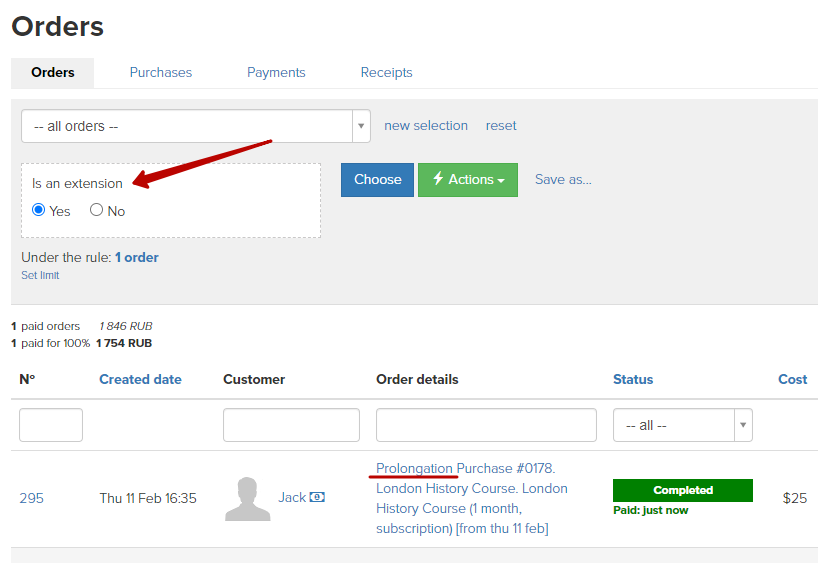
35. Renew a purchase — chooses all orders which renew a purchase. You can specify certain parameters for a purchase (responsible teacher, a product).
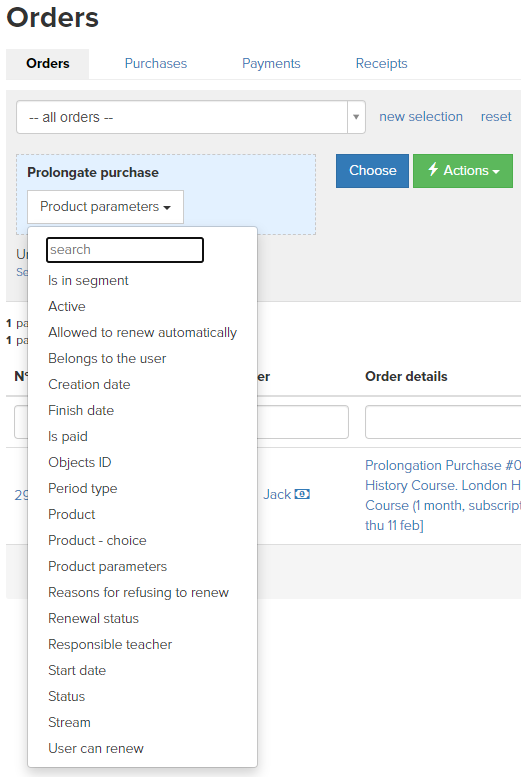
36. Venue — chooses all orders created for an offer with an indicated venue.
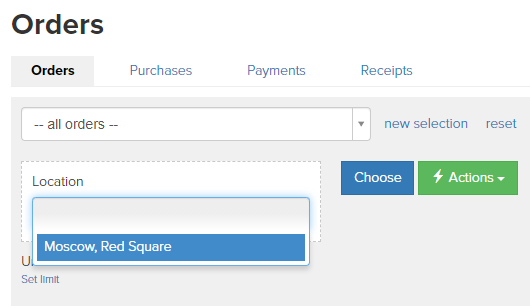
37. Number of order — condition helps to find orders with a certain serial number of a certain customer. For example, the 10th order and all orders following this one:
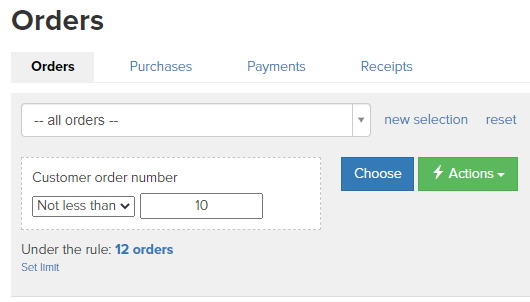
Number of order is not the same as order number in a general list of orders!
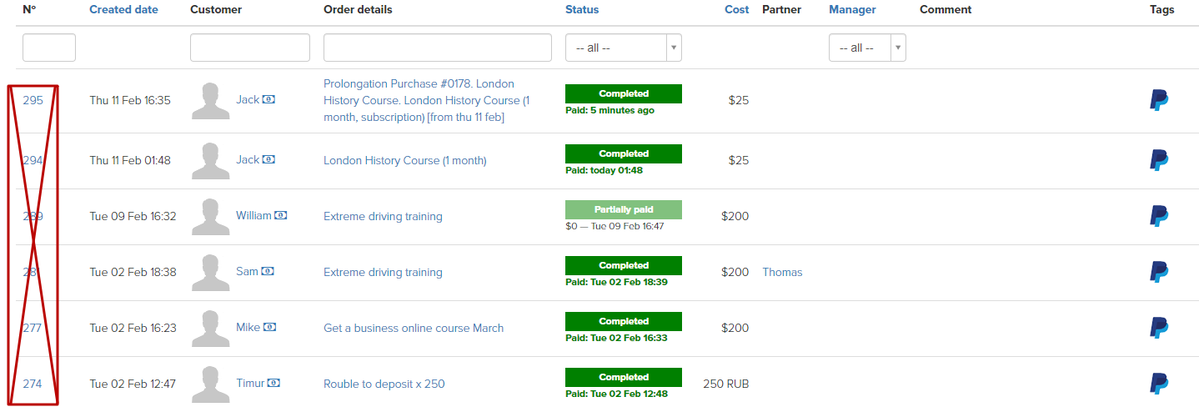
You can combine different conditions by using «and», «or», «not» buttons.
If you often use a certain segment, you can save it for the sake of convenience:
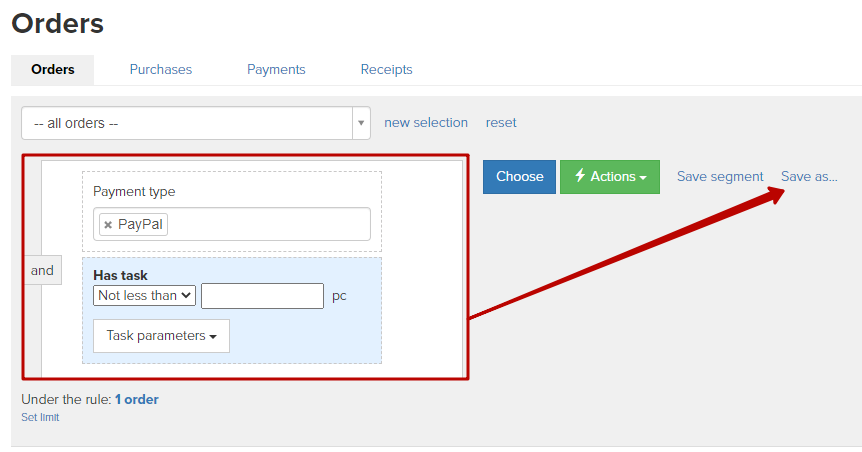
When forming a segment a system shows a brief statistics on orders included to this segment. You can find more information about that in our guide.
We use technology such as cookies on our website to personalize content and ads, provide media features, and analyze our traffic. By using the GetCourse website you agree with our Privacy Policy and Cookies Policy.

please authorize